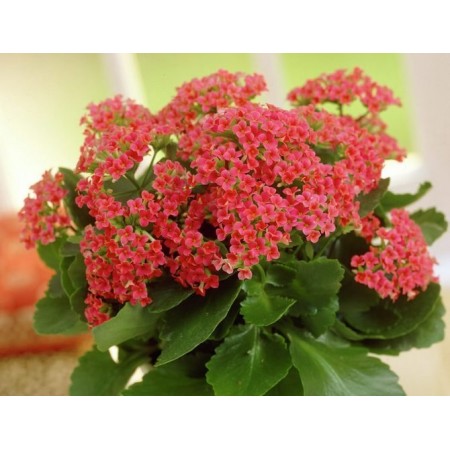Growing Kalanchoe

Kalanchoe is an excellent option for growing at home, the benefit of the flower has not only an attractive appearance, but also has certain healing properties. The presence of this exotic plant will decorate any interior and will become a profitable addition to the decor, designed in almost any style.
Choosing a flower in a store
When buying Kalanchoe in a flower shop, you should carefully determine the degree of flowering. In other words, you should not buy a plant with buds already opened - such a flower is very problematic to take root in a new environment. The leaves of the flower should be green and resilient.
A flowerpot with an acquired flower should be located on a well-lit window sill, protecting it from direct sunlight and sudden temperature changes. Only under these conditions you can enjoy the active flowering of Kalanchoe, which can please us with bright colors for several consecutive seasons.
How often to water
Kalanchoe belongs to those varieties of indoor flowers that are able to accumulate the necessary amount of moisture in the roots and stems. Accordingly, you can water the pot moderately and not too actively - this representative of the flora can tolerate the period of summer drought without any problems.
It is recommended that you carefully monitor that the flower in the pot is not flooded. The root system can quickly rot if the tank does not have a drainage layer or if you do not get rid of excess moisture manually. For irrigation, it is better to use settled water heated to room temperature.
Air temperature and humidity
Kalanchoe does not like too much high humidity. If the air in the room is not suitable for her, then the leaves and buds can get sick, covered with rot and mold. Kalanchoe feels great in conditions familiar to humans, when the air is not too saturated with moisture.
As for temperature, the average value of 20-24 degrees Celsius allows the flower to adapt to new conditions. If the temperature drops below 10 degrees (which happens very rarely, but there is a place to be), then the plant can die quickly. In winter, it is recommended to install additional lighting sources near the flowerpot that will not only provide access to the light, but also artificially raise the temperature for the optimum value.
Transplantation and reproduction
Young Kalanchoe should be transplanted no more than once a year, and more mature representatives of the flora - no more than once every two to three years. When transplanting, you should choose a container that will be several centimeters larger than the previous one, providing for the presence of a drainage layer.
The propagation of Kalanchoe can occur by the usual methods (seeds, cuttings, leaves), which independently take root in new soil.